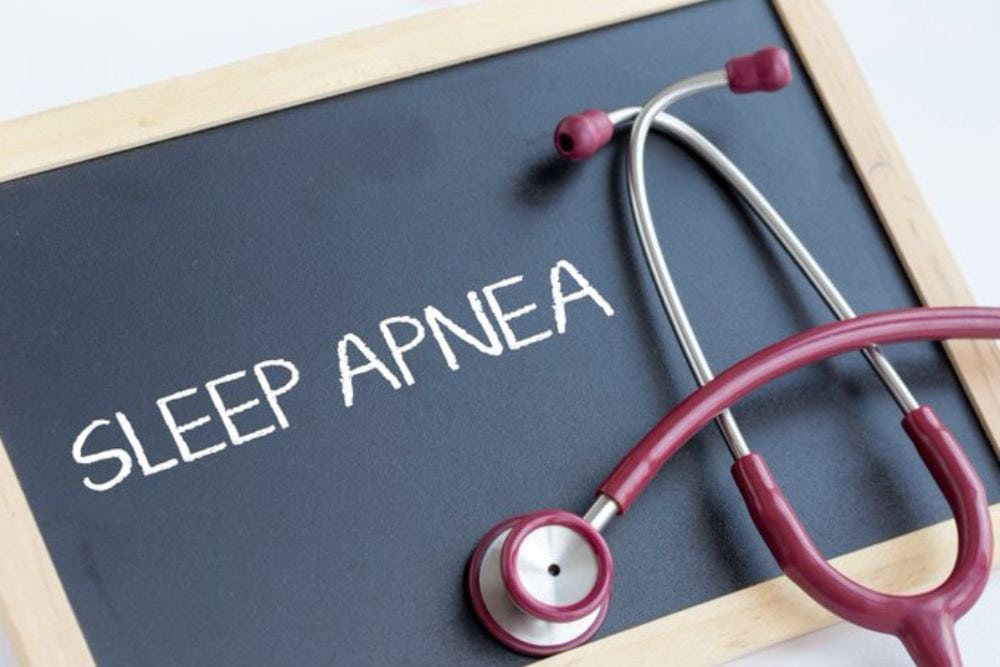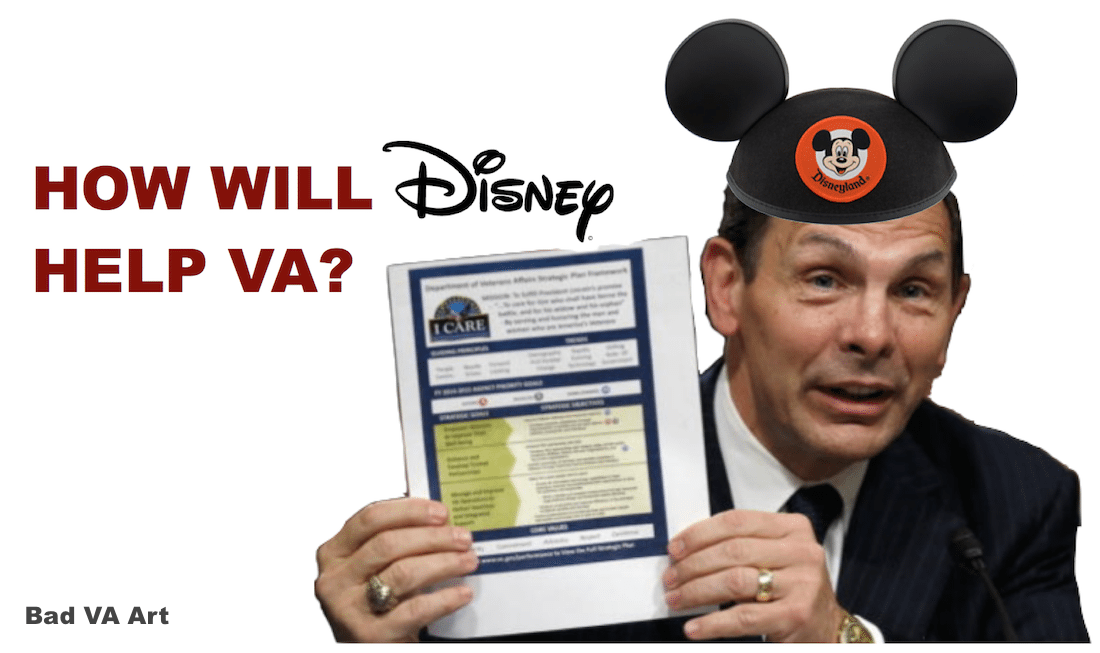VA Sleep Apnea Rating Changes Coming: Veterans Must Act Fast
The Department of Veterans Affairs has proposed major changes to its VA disability benefits, including the sleep apnea rating, that will significantly impact rating options after its implementation.
Toward the end of last year, VA notified the public that it intends to implement new regulations for its VA ratings schedule, including VA compensation ratings for sleep apnea ratings for disabled veterans.
Veterans with ratings or veterans seeking ratings under the current rating system should be safe from the proposed reduction, at least for now. Veterans who are granted ratings under the new system will find it much more difficult to secure a reasonable rating percentage for conditions like OSA.
Sleep apnea is a medical condition and potentially serious sleep disorder where a person’s breathing stops resulting in sleep deprivation and other challenges. Veterans with this condition frequently experience excessive daytime sleepiness and develop various risk factors for other conditions.
For that reason, VA has paid out billions to many veterans who qualify for VA disability ratings up to 100% for sleep apnea since 2013. The most common rating in the VA system is presently for veterans who are prescribed a Continuous Positive Airway Pressure (CPAP) machine, resulting in a rating of 50%.
The new system makes it much more difficult to receive a rating when an airway pressure machine is prescribed. Veterans who may qualify for benefits under the present system should consider pressing for these benefits immediately before the new system is implemented.
The new system could be implemented as early as February 2024 according to various sources.
Current Sleep Apnea VA Ratings Schedule
| 6847 Sleep Apnea Syndromes (Obstructive, Central, Mixed) | Rating |
| Chronic respiratory failure with carbon dioxide retention or cor pulmonale, or; requires tracheostomy | 100% |
| Requires use of breathing assistance device such as continuous airway pressure (CPAP) machine | 50% |
| Persistent day-time hypersomnolence | 30% |
| Asymptomatic but with documented sleep disorder breathing | 0% |
Presently, veterans who require treatment of their OSA with a Continuous Positive Airway Pressure machine are eligible for a 50% disability rating for OSA. The reason this is rated at 50% is because sleep apnea affects the veteran’s health and sleep. To address this, even when fully effective, a CPAP requires being connected to the veteran’s body.
Veterans can receive a 100% rating when they have a CPAP but are also experiencing chronic respiratory failure or similar conditions.
Veterans who do not need a CPAP but who experience chronic, excessive daytime sleepiness can receive disability ratings” of 30%.
Proposed Sleep Apnea VA Rating Schedule
| 6847 Sleep Apnea Syndromes (Obstructive, Central, Mixed) | Rating |
| Sleep apnea with ineffective (as determined by sleep study) or unable to use treatment due to comorbid conditions, and with end-organ damage | 100% |
| Sleep apnea with ineffective treatment (as determined by sleep study) or unable to use treatment due to comorbid conditions, and without end-organ damage | 50% |
| Sleep apnea with incomplete relief (as determined by sleep study) with treatment | 10% |
| Asymptomatic with or without treatment | 0% |
Under the new system, veterans who use a CPAP that is effective will likely not be eligible for a 50% rating but be considered asymptomatic with a 0% rating assuming the treatment is effective.
Somehow VA will now differentiate between veterans where CPAP usage is an ineffective treatment versus a treatment that provides “incomplete relief.” These veterans will receive a 10% rating.
Veterans with persistent daytime hypersomnolence with or without treatment will no longer receive a rating of 30%. Instead, these veterans may receive a 10% rating due to incomplete relief.
This suggests that veterans must be receiving some form of treatment, whether the relief is incomplete versus ineffective, to be eligible for a 10% or 50% rating.
It further appears veterans who receive treatment that is considered effective versus ineffective will only receive a 0% rating and be categorized as asymptomatic.
Ending the “Automatic” 50% CPAP VA Rating:
Arguably, the most significant change in the proposed regulations is the discontinuation of the “automatic” 50% rating for veterans requiring a CPAP for breathing. This shift is removing a significant benefit to veterans.
The way the current rating system is designed, veterans are encouraged to use CPAP machines if they want to receive their maximum benefits. On July 26, 2021, class claims were filed in Massachusetts federal court against a manufacturer of sleep apnea therapy machines (collectively, “Philips”) alleging that the natural degradation of the noise-insulating foam used in the majority of Philips’ sleep products exposed the users to dangerous, toxic chemicals.
On June 14, 2021, Philips issued a recall of between three and four million defective breathing machines after it was brought to light that the PE-PUR foam has the potential to degrade and become toxic to the user. This put many veterans in a precarious position of having to choose between continuing to use a potentially toxic device while they awaited a replacement, or to let their sleep apnea go untreated – which in itself can contribute to heart disease and attack, diabetes, stroke, liver problems, and even death.
Removal of the 30% VA Rating:
Another notable adjustment is the removal of the 30% disability rating for sleep apnea. This means a greater hurdle to greater than 10% rating, which may be limited to only the most severe cases.
First, both the 10% rating as well as the 50% rating require proof “as determined by sleep study”. There are a few prospective problems with this, as sleep studies only show how disruptive the condition is on the veteran’s sleep, and not how that disruption impacts their daily life. Different veterans may experience different daytime symptoms with similar test results.
What 0% VA Rating Will Mean
A 0% rating can be worth pursuing, even if it does not immediately lead to compensation. Getting the condition service-connected can allow for an easier process to an increase if the condition worsens, or to service connecting subsequent secondary complications.
There is also the possibility of a veteran getting a 10% rating for a combination of several non compensable service-connected conditions.
Implementation Date and “Cooling Off” Period:
It’s crucial to note that once the VA finalizes these proposed changes, there should be a 60-day “cooling off” period before the adjustments take effect.
This will allow veterans to submit their claims for service-connection under the old guidelines after reading the new ones, if that would better suit their disability.
Is it a Sleep Disorder?
Medical conditions like this are classified as a sleep disorder. Such medical conditions include insomnia, sleep apnea, parasomnias, narcolepsy, hypersomnia, bruxism, and more.
VA utilizes different sleep disorder ratings for each condition.
What is Obstructive Sleep Apnea, Central Sleep Apnea, and Mixed Sleep Apnea for VA Purposes?
Sleep apnea is, in short, a disorder that causes the affected individual to stop breathing for short periods of time during sleep (apneas). When breathing repeatedly stops enough times during a sleep study, the veteran may receive a diagnosis of sleep apnea.
The repeated awakenings associated with sleep apnea may make restful sleep nearly impossible for most sufferers.
It can impact their families, their jobs, their physical and mental health, and their overall quality of life. Many spouses cannot sleep in the same room with the affected veteran. The condition increases the risk of heart failure by 140%.
Since 2005, diagnosis of OSA have markedly increased across all branches of the military, significantly outpacing the general population.
Different Types and Related VA Disabilities
Obstructive Sleep Apnea
Obstructive sleep apnea (OSA) is the more common form of sleep apnea. This type occurs when the throat muscles relax and the airflow to the lungs is obstructed.
Central Sleep Apnea
Central sleep apnea (CSA) is related to the central nervous system. These apneas occur when the brain fails to send the correct signals to the respiratory system and the muscles that control breathing fail to activate properly.
Mixed Sleep Apnea
There is a third type of sleep apnea that involves treatment for OSA that then converts the sleep apnea to CSA, treatment-emergent central sleep apnea.
Common Secondary Disability Conditions
There are many conditions veterans develop that may be considered secondary to sleep apnea.
For example, individuals may develop high blood pressure or other risk factors. Whenever blood oxygen levels drop from hypoxia, carbon dioxide levels increase, adversely impacting a person’s heart and tissues. Multiple apneas or sleep interruptions can also result in high blood pressure.
Veterans at risk for developing sleep apnea may also need to be on the lookout for other conditions like whole-body inflammation, metabolic disruptions, increased activation of the sympathetic nervous system, and oxidative stress.
How do VA raters deny sleep apnea claims?
VA examiners and adjudicators employ numerous strategies when denying a veteran’s claim for sleep apnea. Sometimes the denial is correct. Sometimes the denial is not correct.
We are focusing on the latter.
Generally, the most common errors are the result of mischaracterizing a claim or using a poorly qualified clinician.
We frequently see both where the examiner is a nurse practitioner in family medicine who does not cite appropriate medical literature. This poorly qualified person will get instructions from VA to look only for a diagnosis and usually to process under a direct service-connection theory without reference to potential secondary rating options.
Ugh. I hate these, but it is very common.
VA will often deny sleep apnea due to the time between service and diagnosis. This ignores the potential continuity of symptoms that the veteran may have been experiencing but was unaware of the root cause – such as daytime drowsiness. Unless someone else is there to witness apneas or the trademark severe snoring, the veteran has no way of knowing that their daytime symptoms are due to sleep apnea. In this instance, a denial for lack of appropriate evidence may be incorrect.
VA will also deny sleep apnea claims based on no complaints in service, which is similar to the above. The veteran could have been experiencing sleep apnea symptoms in service but had been unaware. Active duty service members can often suffer complaints of daytime somnolence (sleepiness), morning headaches, difficulty staying asleep, difficulty paying attention while awake, and irritability without ever connecting the dots to a sleep apnea concern.
VA will also deny sleep apnea after consideration of a veteran’s ILER report for toxic exposure while serving in the Middle East. This denial type tends to focus only on the report without proper citations to medical literature by a VA examiner who is not a sleep medicine physician.
Any sleep apnea claim where the veteran is obese by BMI on service-connected sleep apnea study will have a harder time getting service-connection. VA believes veterans who are obese develop sleep apnea. Since obesity is considered the fault of the veteran, the argument goes that the VA should not be responsible for the condition.
Generally, VA does not recognize obesity as a service-connected condition, but it may be rated as a secondary condition where sleep apnea could then be rated. Alternatively, plenty of individuals develop OSA despite not being obese, suggesting VA’s rationale is flawed.
Either way, when it comes to a denial based on a high BMI, the veteran may need to show that the medical evidence supports sleep apnea due to another mechanism, such as chronic sinusitis, if applicable, or that the obesity was related to, for example, a service-connected orthopedic condition.
There are many other examples I could go into, but I think you get the point.
Sleep Study and Other Evidence
To establish service-connection of a condition, there are three main parts that must be shown.
Diagnosis: In order to get sleep apnea service-connected, you MUST have a sleep study (polysomnagraphy) done that shows objective evidence of apneic events. This piece of evidence is required for any sleep apnea claim.
If you are pursuing OSA secondary to post-traumatic stress disorder (PTSD), the medical literature supports this connection with the presence of symptoms such as hypervigilance, nightmares, and exaggerated startle response. Those can be found in C&P exam DBQs (Disability Questionnaires) that would have been filled out during your VA exam for PTSD. If those symptoms were not marked, you can also submit any mental health treatment records that describe those symptoms, or a Lay Statement where you describe how you experience those symptoms.
For OSA secondary to allergic rhinitis, sinusitis, or rhinosinusitis, the VA often wants to see X-ray evidence showing the severity of those conditions or other medical records noting those diagnoses and symptoms.
If you pursue OSA through the new PACT Act presumption, your ILER report (Individual Longitudinal Exposure Record) or personnel records showing active duty in the presumptive areas may be important contributory evidence.
We are hearing a lot of stories of veterans receiving denials despite VA granting conditions like rhinitis or sinusitis while ignoring an assessment of whether OSA, for example, is secondary to the newly granted conditions.
Applying for VA Disability Rating for Sleep Apnea
The process of winning a sleep apnea claim should be easy, and the VA should help you evaluate any reasonable theory of entitlement to maximize your benefits, but that rarely happens.
Filing A VA Disability Claim
You can get two types of service connections for sleep apnea or other sleep disorders: Direct Connection or Secondary Connection. The distinction is important to consider when filing your claim, as the evidence needed to support the two can be different.
Direct Service Connection
VA is looking for a sleep study in service for a Direct Service Connection. We have already discussed why that is rare, even if the condition started in service.
In this context, direct service connection may apply to veterans who developed sleep apnea while they were in the military. This is easy to prove if you received a diagnosis of sleep apnea while in the military.
Even if you developed sleep apnea while in the military, while it should be considered a direct military service-connected condition, that type of argument generally falls flat without objective medical evidence and diagnosis while in the military.
Mere symptoms of sleep apnea documented in the military are frequently insufficient to gain direct service-connection for this condition.
Alternatively, any Service Treatment Records (STRs) that mention morning headaches, excessive daytime sleepiness, non-restful sleep, or even feelings of insomnia may be supportive. Being supportive is not the same as being conclusive.
A Buddy Statement from a fellow service-member who witnessed either the severe snoring or, better yet, the apneas themselves being documented in a sleep study may be considered supportive evidence for a direct connection.
Just do not hold your breath, pun intended, in securing direct service-connection absent a clear diagnosis of sleep apnea while in the military.
Rating as Secondary Service Connected Disabilities
OSA specifically is also commonly a Secondary Service-Connection, which means a primary service-connected condition caused or significantly contributed to the diagnosed OSA. Prime examples are PTSD, sinusitis and rhinitis, a musculoskeletal condition that led the veteran to becoming obese, certain respiratory conditions, or even medication side effects.
Filing For VA Disability
Once you make up your mind on whether to submit a VA disability claim, you can either file the initial claim on a VA Form 21-526EZ or online, or you can submit an Intent to File while you gather evidence to support your claim. Submitting an Intent to File will save your earliest effective date while giving you one year to gather your evidence.
With your initial claim, make sure you are listing your proposed connection (“OSA secondary to PTSD”, “OSA due to Burn Pit exposure”, etc.).
Ensure VA has a copy of your sleep study that diagnosed OSA. If this study was not done through VA, you can upload this yourself or use VA Form 21-4142 to authorize VA to obtain your records from a non-VA source.
Include any supportive materials such as Buddy Statements, Lay Statements, or any other evidence you want VA to consider.
Using An Appeal i.e. Decision Review Request
If you are denied after your initial claim, you can pursue a Supplemental Claim, a Higher Level Review (HLR), or a formal appeal. These must be filed within one year of the denial to maintain the earliest effective date.
Veterans who fail to submit the request within one year may still file to re-open the claim outside of one year if they have new and relevant evidence. To re-open the previously decided claim, the veteran must use a Supplemental Claim form.
Sleep Apnea Supplemental Claim
A Supplemental Claim is used when you have new and relevant evidence VA should consider to re-open or re-review a previously denied claim that was not timely appealed. For example, many veterans are denied sleep apnea through limited consideration of service-connection theories. Years later, they receive service-connection for allergic rhinitis or sinusitis. That is a great time to work on getting a sleep apnea claim re-opened with new evidence.
New evidence can be medical treatment records, such as a new and more current sleep study, x-ray evidence of sinusitis/rhinitis, mental health treatment records describing your PTSD symptoms, etc.
Other evidence could be a favorable grant of a condition like chronic sinusitis rendered after the prior denial of a sleep apnea claim through the PACT Act. Alternatively, new evidence could be in the form of recent research that shows a higher likelihood of sinusitis being linked to sleep apnea. There are many forms of evidence out there that can help.
Sleep Apnea Higher-Level Review
A Higher-Level Review is used in cases where you believe VA has decided the claim in error and wish for them to reconsider the existing evidence. A Higher-Level Review may receive a decision sooner than a Supplemental Claim and certainly much sooner than a Formal Appeal.
These types of review requests must be filed within one year of the decision being contested.
An example of an argument to address a denial could be VA’s failure to consider sleep apnea as being secondary to a condition like chronic sinusitis so long as the sinusitis is service-connected and the review request is filed within one year of the denial.
Sleep Apnea Formal Appeal
Another option if you want to wait 3-7 years for a decision or remand for more development would be a timely formal appeal to the Board of Veterans Appeals. Most of my clients do not have that kind of time to burn, so we look at other options to develop the case fully at the regional office before ever resorting to a formal appeal.
Why Did the Sleep Apnea VA Rating Change?
Follow the money.
Are the changes a benevolent change to enhance veterans’ access to health care resources and benefits payouts?
Not a chance.
A quick scan of a January 2020 VA OIG report on sleep apnea should tell casual readers everything you need to know:
Titled “Opportunities Missed to Contain Spending on Sleep Apnea Devices and Improve Veterans’ Outcomes.”
What opportunities?
“Since fiscal year (FY) 2013, sleep apnea has become the most prevalent service-connected disability of all the respiratory disabilities for which veterans receive benefits. The OIG found that in FY 2019, about 1.3 million veterans enrolled in VHA have a sleep apnea diagnosis, an increase of about 384,000 veterans (44 percent) from FY 2015.1 The number of veterans who receive sleep apnea devices and supplies from VHA increased approximately 96 percent—from about 342,000 in FY 2014 to about 669,000 in FY 2018. VHA spent an estimated $147.6 million in FY 2014 on sleep apnea devices and supplies. By FY 2018, that amount grew to an estimated $233.9 million, an increase of about 59 percent.”
OIG wants VA to save at least $261 million over the next five years after a 2020 report by focusing on greater in-home monitoring and focus on whether treatments are incomplete or ineffective.
Whatever OIG dreams up, VHA and VBA tend to jump into lockstep. Usually, veterans end up being overburdened when seeking benefits consequently.
VA believes the instances of sleep apnea diagnosis, prescription of a CPAP, and, thus, corresponding benefits awards are too much for the agency to handle.
To address this, OIG encouraged VHA to enhance veteran usage of their CPAP machines in the home. Their argument is that veterans who use the machines less than half the time are achieving only incomplete relief, and such instances where a machine is not being used should result in the CPAP being returned to the agency rather than being the veteran’s property.
The new rating criteria seem to enhance the monitoring of veterans using CPAP machines by tying a monetary incentive to the activity. To warrant hiring ratings under the new criteria, veterans will require more invasive post-diagnostic monitoring in the home.
Can you imagine how valuable the data that VA can access from your home will be?
That monitoring will be to assess whether the veteran’s symptoms were reduced such that the veteran is asymptomatic, whether the veteran receives incomplete relief despite receiving a CPAP or related treatment, or whether the veteran receives ineffective treatment despite using a CPAP machine.
All four rating times from 0% to 100% will require the agency to provide significantly more sleep studies and monitoring.
At the time of the OIG report in 2020, VA was already piloting the “remote Veteran Apnea Management Platform (REVAMP).” The REVAMP program is designed to allow the VA sleep medicine clinician to monitor and troubleshoot issues related to the veteran’s use of a CPAP.
The new rating change will open up a potential pandora’s box for in-home monitoring to confirm entitlement to higher ratings for sleep apnea treatment. The focus will be on the treatment’s effect rather than the condition’s severity.
What Does This Rating Change Mean for You?
The impending changes highlight the urgency for veterans dealing with sleep apnea to take action now.
If you’re considering filing a VA claim or are currently in the claims process, the time to act is now. Once the law changes, if the condition would be rated higher under the new system, veterans are able to request reevaluation, but if not, veterans can guarantee themselves the old rating system by applying (and then actively pursuing any appeals) starting before the implementation.
What You Can Do:
- Submit Your Claim Now: If you haven’t already, submit your sleep apnea VA claim promptly to ensure it is processed under the current rating system.
- Stay Informed: Keep yourself updated on the status of the proposed changes through official VA communications and reliable veterans’ organizations.
- Document Your Symptoms Immediately: Provide detailed information about your symptoms, limitations, and the overall impact of sleep apnea on your daily life to bolster your claim.
As we anticipate these significant changes to VA ratings for sleep apnea, veterans are encouraged to take proactive steps. The “cooling off” period post-finalization offers a window of time for preparation, but getting your claim in now is the key to ensuring a smooth process. If you’re already rated for sleep apnea, rest assured that the grandfathering clause protects your current benefits.
Thank you for your service, and we remain committed to keeping you informed and supported through these changes.






I am 50% OSA dating back to 8/15/2019. 77 Years old. This is bad news. Do you think that I will be targeted. Or will the five yearand the over 55 rules apply?